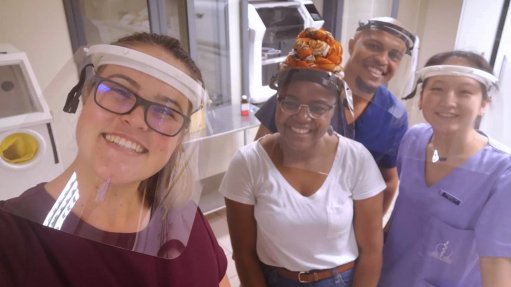
Students working in a 3D printing lab at Stellenbosch University
Stellenbosch University’s orthopaedic surgery division has started producing visors to protect healthcare workers against Covid-19, using three-dimensional (3D) printing.
The 3D printing laboratory was originally built by the university in 2018 to assist surgeons in planning and rehearsing surgical procedures.
The visors are being distributed as protective gear for people working on the frontline of fighting the Covid-19 crisis.
An orthopaedic surgeon and clinical anatomy lecturer Dr Rudolph Venter came up with the idea to use the 3D printing lab amid the outbreak to produce protective gear for healthcare workers.
The university then consulted with Tygerberg Hospital, which identified face shields as an immediate need.
“There is a burgeoning community of people globally using 3D printers and laser cutters to produce equipment for healthcare workers, sharing designs and refining them, which are all shared online,” says Venter.
Venter and his team downloaded a design that met a range of different criteria for the visors and started sourcing the material to make them.
The headgear comprises a plastic headband to which a clear visor is attached with elastic to the wearer’s head. Local suppliers have been used to acquire sheets of clear plastic and elastic, while the team uses a few rolls of 3D printing filament that is in stock at the lab.
The head of the orthopaedic surgery division Jacques du Toit made funding available for the materials to be sourced.
Venter has since gotten community volunteers to produce the same design on their home 3D printers.
A local engineering firm Rapid 3D donated ten rolls of filament and consumables for the printers being used at the university. Another donation was from Curro schools' head office, which donated 20 visors.
As at April 6, the university had produced 134 visors.